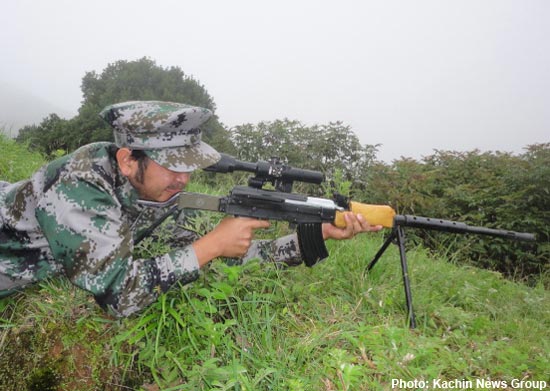Dozens of Burmese soldiers were killed Saturday and a large number were injured when a series of land mines were remotely denoted. The explosions occurred in an area near the China border that the Burmese army had recently captured, Kachin Independence Army (KIA) sources claim.

A KIA officer who participated in the attack told the Kachin News Group that approximately 30 large landmines were planted at the KIA’s Battalion 3 headquarters on Wuhtau Bum Mountain just before the KIA abandoned the base Friday afternoon.
The next morning, the land mines were triggered just after an estimated 300 Burmese soldiers arrived at the former KIA stronghold. Though it is unclear how many soldiers were killed by the massive explosion, a KIA officer based at the group’s Laiza headquarters told the Kachin News Group that the KIA estimates the attack killed a very large number of Burmese soldiers, while injuring perhaps as many as 100.
The Burmese army rarely discloses causality figures. Many observers believe that the intense fighting between the KIA and the Burmese army during the last few weeks has resulted in the army enduring its largest losses in more than two decades. Burmese army defectors say that wounded soldiers receive extremely poor medical treatment if they are treated at all, causing many soldiers to die from injuries that should be treatable.
The KIA’s Battalion 3 operates between the Myitkyina-Kambaiti Road and the Dabak River. Its operational area been the site of fierce fighting during the past few weeks. The Burmese army wants to capture this sector to cut the KIO’s territory in two and isolate the KIA’s Laiza-based headquarters from other strategic KIO strongholds.
Observers estimate that fighting in the Battalion 3 area in Waingmaw Township has forced more than 4,500 civilians to take refuge behind KIO lines. Many of these people have fled to temporary camps located near the China border between Kambaiti and the Dabak Hka River.



